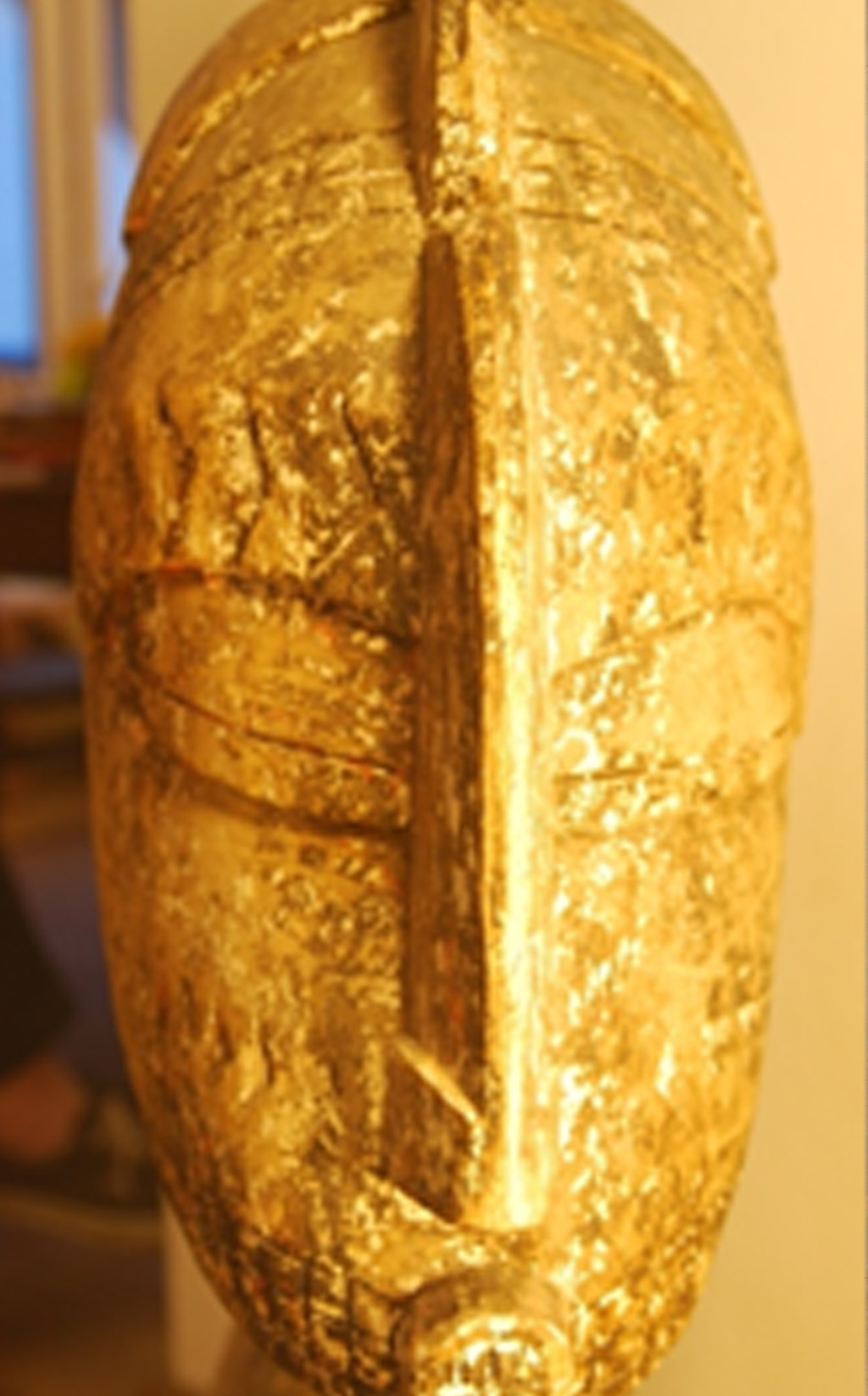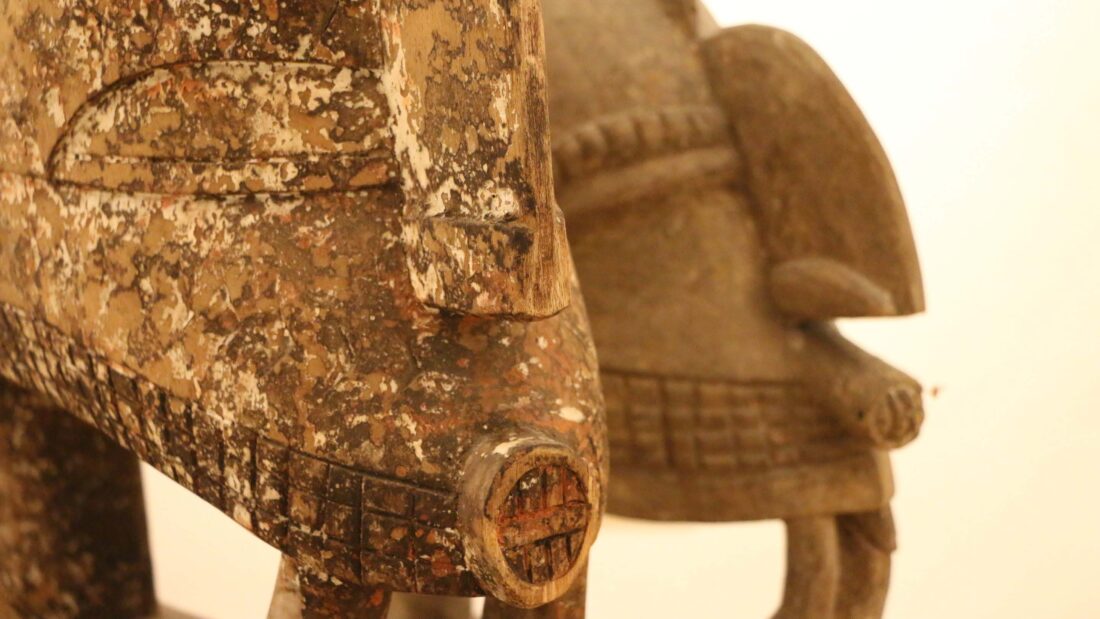Tribes/tribus/Stämme
Baga
Like the neighbouring Bidyogo, the Baga, who are descendents of 15th- or 16th-century migrants from the Sudan now occupying the coastal region of Guinea, carve sacred objects.
the massive nimba, with its great cantilevered head. The nimba’s head is supported on the upper part of a female torso, carved so as to rest on the shoulders of the wearer, who sees out through a hole between the breasts, his body hidden in raffia fibre. This mask appeared at harvest festivals and other celebrations.
The most important of the Baga art forms is the great mask, D’mba or Nimba.
It represents the mother of fertility, protector of pregnant women, and presides over all agricultural ceremonies. The dancer, wearing a full raffia costume, carries the mask on his shoulders, looking out through holes between the breasts. In use, such masks rise more than eight feet above the ground; they often weigh more than eighty pounds. Most show a standardized pattern of facial scarification.
“Nimba is the joy of living; it is the promise of abundant harvest”
The Baga Nimba, or D’mba, represents the abstraction of an ideal of the female role in society. The Nimba is essentailly viewed as the vision of woman at her zenith of power, beauty, and affective presence; rather than a goddess or spirit. The typical Nimba form illustrates a woman that has been fertile, given birth to several children, and nurtured them to adulthood.
Wooden figures, often worn or carried in the form of masks, are used by the initiation societies to educate initiates about the role of the spirits whom they represent. The ancestors are represented in figures that embody both human and animal characteristics. Geographically the Baga belong to the coast, yet their art is more stylistically akin to that found in the Western Sudan region.

